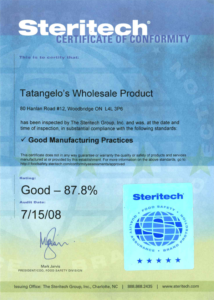HACCP is an internationally recognized, science-based, food safety system that is used to help ensure the manufacture of safe food products. HACCP is designed to prevent,reduce or eliminate potential biological, chemical and physical food safety hazards, including those caused by cross-contamination. During the development of a HACCP system, potential hazards are identified and control measures are implemented at specific points in the manufacturing process.
and control measures are implemented at specific points in the manufacturing process.
HACCP:
- Provides a more systematic approach to ensuring food safety than traditional inspection procedures
- Places more responsibility for ensuring food safety on the food manufacturer than traditional inspection programs
- Is based on science, rather than simply past experience or subjective judgement
- Focuses on preventing problems before they occur, rather than trying to detect failures through end-product testing.
HACCP Inspects:
- Fresh-cut produces
- Juice and nectary products
- Food outlets
- School food and services
- Meat and poultry products
- Fish and fishery products
7 HACCP Principles
Principle 1: Conduct a hazard analysis.
Principle 2: Identify critical control points.
Principle 3: Establish critical limits for each critical control point.
Principle 4: Establish critical control point monitoring requirements.
Principle 5: Establish corrective actions.
Principle 6: Establish record keeping procedures.
Principle 7: Establish procedures for ensuring the HACCP system is working as intended.
The seven HACCP principles are included in the international system ISO 22000. This standard is a complete food safety management system incorporating the elements of prerequisite programs for food safety, HACCP and quality management system which together form an organization’s Total Quality Management.
HACCP Implementation
HACCP implementation involves monitoring, verifying and validating of the daily work that is compliant with regulatory requirements in all stages all the time. The differences among those three types of work are given by Saskatchewan Agriculture and Food

